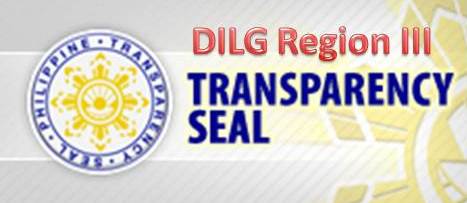 [dropcap class="dropcap3"] Central Luzon is traditionally known as the rice bowl of the Philippines, being the region that produces most of the country’s rice supply. It harbors the largest plain and it is the third biggest region that serves as a major industrial and agricultural center just north of Metro Manila. It may well be considered as one of the leading growth regions in the Philippines.[/dropcap]
[dropcap class="dropcap3"] Central Luzon is traditionally known as the rice bowl of the Philippines, being the region that produces most of the country’s rice supply. It harbors the largest plain and it is the third biggest region that serves as a major industrial and agricultural center just north of Metro Manila. It may well be considered as one of the leading growth regions in the Philippines.[/dropcap]
It is an important trading center and transportation terminal for products. Land travel is facilitated by a network of well-paved and extensive highways and roads linking all municipalities within the region.
This region covers a total land area of 18,230.8 km2 and occupies the central portion of the island of Luzon. [blockquote class="alignright"]It is such a pride to note that six (6) Presidents of the Republic of the Philippines came from this region including the 15th and incumbent President Benigno”Noynoy” Aquino III who took his oath on June 30, 2010. [/blockquote]
Region III is composed of seven (7) provinces and thirteen (13) cities. Provinces include Aurora, Bataan, Bulacan, Nueva Ecija, Pampanga, Tarlac and Zambales. Out of the thirteen (13) cities, two (2) are Highly Urbanized (Angeles in Pampanga and Olongapo in Zambales) and eleven (11) are Component Cities (Balanga in Bataan; Cabanatuan, Gapan, Muñoz, Palayan and San Jose in Nueva Ecija; San Fernando in Pampanga; San Jose Del Monte, Meycauayan and Malolos in Bulacan; and Tarlac City in Tarlac. It has 20 congressional districts, 117 municipalities and 3,102 barangays.
{gallery}stories/presidentsr3{/gallery}.
[highlight class="blue"] Local Government Units:[/highlight]
The Province of Aurora is known for its natural beauty and historical past. Agriculture and forestry are the major industries in this province and is likewise rich in mineral deposits. On the other hand, the Province of Bataan which is known as symbol of democracy and freedom is indeed rich with significant historical events. Bataan remains basically an agricultural province. It is proving to be a tourist haven boasting a multitude of exciting places to visit and interesting things to do.
The Province of Bulacan is among the most progressive in the country and most populous in the region. Its people, the Bulakenyo are educated and industrious. The province’s pride is its richness in historical heritage, being the cradle of the nation’s noble heroes, and home to many of the country’s greatest artists.
Nueva Ecija is considered the main rice growing province of the country, thus it is often referred to as the “Rice Granary of the Philippines. Education is very well established as a major industry in the province. Also, health services is a notable industry and a number of hospitals cater to patients from within Nueva Ecija and some coming from neighbouring provinces.
Pampanga is famous for its sophisticated culinary industry. Kapampangans are well known for their culinary creations. Well known food products range from the ordinary to the exotic. The name "Pampanga" comes from the word pangpang meaning riverbank, a fitting name for a flat country crisscrossed by a hundred small branches of the Pampanga River. The province lies in the southern portion of the central plains of Luzon. Farming and fishing are the two main industries of the province.
The Province of Tarlac was the last to be organized under the Spanish Regime. The name 'Tarlac' was derived from a 'Talahib' like weed called by the Aetas "Matarlac". Along the year, the word 'MALA' was removed and shortened to 'Tarlac'.
Zambales is basically an agriculture province. Major industries here include farming, fishing and mining. The inhabitants are composed of three principal ethnic groups: the Ilocanos, Tagalogs and Zambals. The name of the province is derived from its earliest inhabitants, the Zambals. They worship spirits called "anitos", thus they were referred to as "Sambali" from the Malay word samba, meaning "to worship". The term was later Hispanicized to "Zambal".
All provinces and cities in Central Luzon generally implement different strategies in order to maintain peace and order in their areas. Active anti-crime operations, intensified checkpoints, increased police visibility and anti car-napping task force are just some of these implemented strategies.










 [dropcap class="dropcap3"] Central Luzon is traditionally known as the rice bowl of the Philippines, being the region that produces most of the country’s rice supply. It harbors the largest plain and it is the third biggest region that serves as a major industrial and agricultural center just north of Metro Manila. It may well be considered as one of the leading growth regions in the Philippines.[/dropcap]
[dropcap class="dropcap3"] Central Luzon is traditionally known as the rice bowl of the Philippines, being the region that produces most of the country’s rice supply. It harbors the largest plain and it is the third biggest region that serves as a major industrial and agricultural center just north of Metro Manila. It may well be considered as one of the leading growth regions in the Philippines.[/dropcap]













